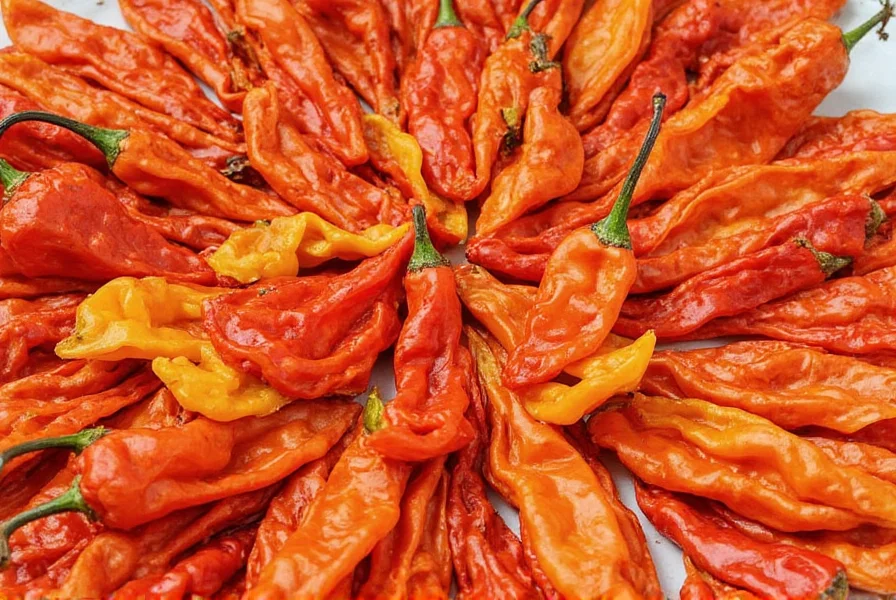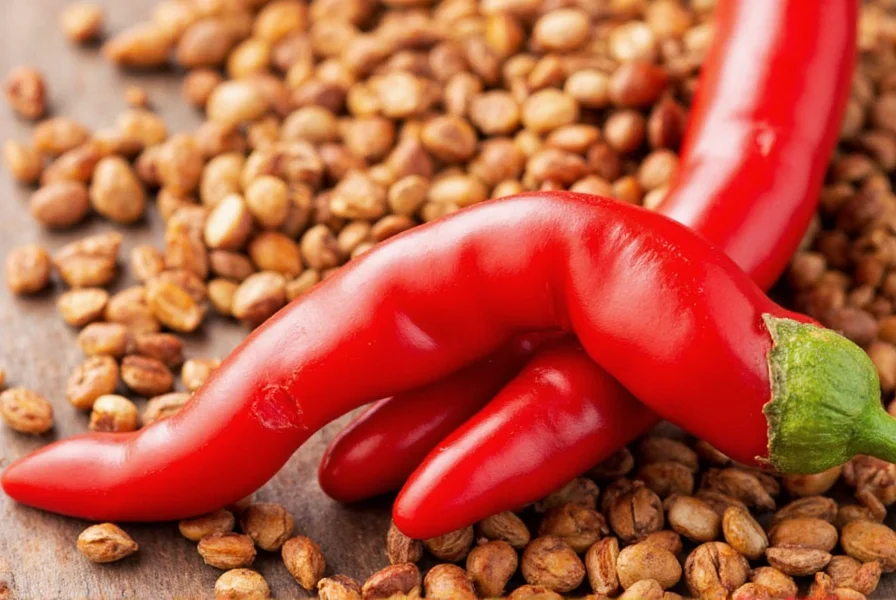Table of Contents
Introduction to Cayenne Pepper
Ground cayenne pepper is a versatile spice used worldwide to add heat and flavor to dishes. This guide provides practical tips on using cayenne pepper in cooking, including how much to use, substitutes, storage, and comparisons with other peppers. Whether you're new to spices or a seasoned cook, these tips will help you master cayenne pepper.

Cayenne Pepper Heat Level Compared to Other Peppers
Understanding heat levels is essential for using cayenne pepper effectively. Here's how it compares to other common hot peppers:
| Pepper | Heat Level (Scoville) | Flavor Profile | Best Uses |
|---|---|---|---|
| Cayenne Pepper | 30,000–50,000 | Spicy, slightly sweet | Sauces, rubs, seasonings |
| Jalapeño | 2,500–8,000 | Mild, grassy | Salsas, tacos, stuffed peppers |
| Habanero | 100,000–350,000 | Smoky, fruity | Hot sauces, desserts, chutneys |
| Chipotle | 2,500–8,000 | Smoky, earthy | Barbecue sauces, stews, salsas |
| Ghost Pepper | 850,000–1,040,000 | Intense, sharp | Extreme hot sauces, challenge foods |
How to Use Cayenne Pepper in Cooking
Follow these specific techniques to incorporate cayenne pepper into your dishes:
- Start with precise measurements: Use 1/8 teaspoon per serving for mild heat, 1/4 teaspoon for medium heat. Always add gradually and taste before adding more.
- Toast for enhanced flavor: Heat 1/2 teaspoon cayenne in a dry pan for 30 seconds before adding to sauces or rubs to release aromatic compounds.
- Combine with oil for even distribution: Mix cayenne with olive or avocado oil before applying to meats or vegetables for consistent heat distribution.
- Balance with acid: Add a splash of lemon juice or vinegar to cut through heat and enhance flavor complexity.
- Use in unexpected dishes: Add a pinch to chocolate desserts, fruit salsas, or roasted nuts for sweet-heat contrast.
Substitutes for Cayenne Pepper
When you don't have cayenne pepper, try these alternatives:
- Chili powder: Use 1/4 teaspoon cayenne for every tablespoon of chili powder. Note that chili powder contains additional spices like cumin and garlic.
- Red pepper flakes: Use 1/2 teaspoon flakes for every 1/4 teaspoon cayenne. Flakes provide texture and slower heat release.
- Paprika + black pepper: Mix 1 teaspoon paprika with 1/8 teaspoon black pepper for similar heat and flavor profile.
- Hot sauce: Replace 1/4 teaspoon cayenne with 1/2 teaspoon hot sauce (adjust for liquid content in recipe).
Storage and Buying Tips
Maximize freshness and potency with these storage and purchasing guidelines:
- Buy pure cayenne: Check labels for "100% cayenne pepper" with no additives or fillers.
- Choose opaque containers: Select airtight, dark-colored jars or bags to protect from light exposure.
- Store in cool, dark places: Keep away from stovetops, ovens, or windows. A pantry cupboard is ideal.
- Check expiration dates: Properly stored cayenne maintains potency for 2-3 years. Discard if color fades or aroma weakens.
What is the difference between cayenne pepper and red pepper flakes?
Ground cayenne pepper is made from a specific type of chili pepper dried and ground into fine powder, while red pepper flakes are coarsely ground mixtures of various dried chilies. Cayenne has consistent heat (30,000-50,000 Scoville) and fruity notes, while red pepper flakes vary in heat and provide texture.
Can I use cayenne pepper in sweet dishes?
Yes! A pinch (1/8-1/4 teaspoon) enhances chocolate desserts, fruit salsas, and baked goods by creating sweet-heat contrast. It works best in dark chocolate recipes where the bitterness complements the spice.
How should I store ground cayenne pepper?
Store in an airtight container away from heat, moisture, and sunlight. A cool, dark cupboard preserves potency for 2-3 years. Avoid storing above stoves or near heat sources which accelerate flavor loss.
What are the health benefits of cayenne pepper?
Cayenne contains capsaicin which may improve metabolism, reduce appetite, provide pain relief, and offer anti-inflammatory benefits. It's also a good source of vitamins A and C. Always consume in moderation as part of a balanced diet.
Conclusion
Ground cayenne pepper is a powerful culinary tool that transforms dishes with its vibrant heat and flavor. By understanding its heat level, using precise measurements, and pairing it with complementary ingredients, you can elevate any recipe. Remember to start small, store properly, and experiment confidently to master this versatile spice.











 浙公网安备
33010002000092号
浙公网安备
33010002000092号 浙B2-20120091-4
浙B2-20120091-4